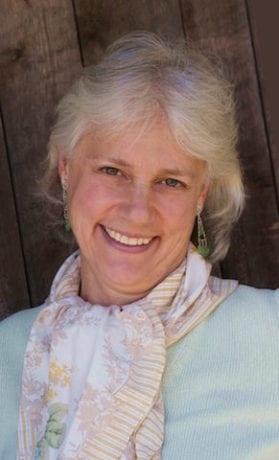By Patti Wood
In my columns I usually try to alert readers to the many environmental hazards that surround us, from single-use plastics to chemical contaminants in everyday products, from water and air pollutants to our warming planet. But I have another message to convey as well, and that is that humans are as much a part of nature as any other living thing on this planet. Sometimes it feels like a stretch to say so, considering our built environment and technology-driven existence, but it’s true.
What do humans need for survival? We completely depend on the life-sustaining gifts from the Earth that all living things require—air, water and food. This has been heartbreakingly apparent recently as we watch scenes of Ukrainians walking through their war-torn streets with empty containers searching for clean water to drink, and trying to avoid the smoke and pollutants from burning structures that make it hard to breathe. Thousands of Ukrainians who didn’t evacuate have limited or no food supplies.
I find it a worthwhile exercise to think about how dependent we actually are on the Earth’s ecosystems, the Earth’s atmosphere and the Earth’s fertile oceans and land masses. In recent conversations with a doctor who specializes in circadian rhythms, he reminded me that the sun’s light and warmth is also critically important for all living things.
These simple “facts of life” are things we humans take for granted, things we don’t ever think about as we go about our daily lives. Even more remote to our thinking are the ecosystems that supply some of these life-sustaining needs. Understanding the peril our planet is in is a first step in realizing that our activities and decisions are directly related to the Earth’s resources that keep us alive.
In photographs taken from space, it’s clearly apparent that our planet is made up mostly of water. However, more than 99% of the water on Earth is unusable by humans and other terrestrial living things, leaving a very small percentage of the remaining 1% in clean, fresh water to share with our fellow inhabitants.
For as long as many of us can remember, the water cycle kept the water flowing into our faucets, our hoses, our swimming pools and showers. But that luxury is coming to an end. Erratic precipitation and heat waves are taking their toll. Ask your friends and family living in California’s drought-stricken regions. Ask vineyard owners and farmers who have extracted all they can from their underground aquifers. Ask those who have been forced to evacuate their homes and neighborhoods due to wildfires. This is the new norm in many parts of the country.
Water vapor, the most abundant greenhouse gas, increases as the Earth’s atmosphere warms, which in turn increases cloud formation and precipitation. We have increasingly seen this process playing out in devastating flooding from record-breaking rainfall levels. Water vapor stays in the atmosphere a much shorter time than other greenhouse gases such as carbon dioxide, methane and nitrous oxide, which can last for years and even centuries. However, a warmer atmosphere retains more water vapor which increases the potential for greater ozone formation.
Scientists are just beginning to unravel the importance of water vapor in terms of climate change. We do know that heat and humidity in combination with vehicle and industrial air emissions make it harder to breathe, even for people without respiratory illnesses.
Conventional farming across the world, but especially in the United States, is also a major contributor to global warming. Farming today is exploitative and extractive, utilizing technologies and inputs that produce prodigious amounts of greenhouse gases, contaminate ground and surface waters with chemical pesticides and fertilizers and leave the soil barren and unproductive unless we continue the unnatural and destructive cycle.
We are even poisoning the essential pollinators needed by farmers and growers around the world with pesticides. The use of cheap sewage sludge for fertilizer, which comes from wastewater treatment plants, is contaminated with PFAS and other chemicals, as well as metals and occasionally pathogens, that create national food scares about e-coli and salmonella outbreaks. Thanks to organic farmers who work with the soil, enriching it as they grow, we have choices if we are lucky enough to live in a place where organic food is widely available.
The global warming debate pits those who think this is just a cyclical occurrence against those who believe humans have caused not just global warming, but other related catastrophic events and conditions that put our planet and all living things at risk.
I am in the latter camp. It is at our peril to continue to behave as if we are not part of nature and as if there are no consequences to destroying it. Be it hubris, greed or insatiable consumption, humans manipulate and use nature to make money. We need to think about our children and grandchildren potentially living with a scarcity of food, contaminated air and water and a climate that will overwhelm our current infrastructure for temperature control. Humans are the problem and humans working as an integral part of nature can be the solution.

